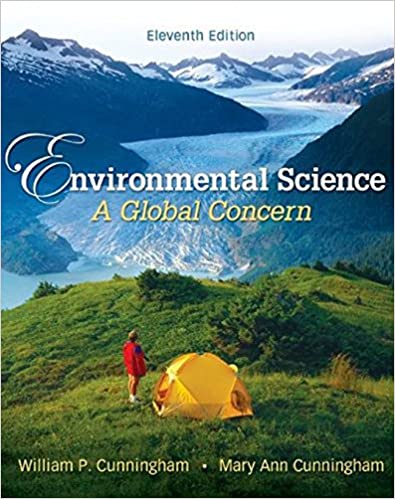
Environmental Science: A Global ConcernEnvironmental Science: A Global Concern 11th Edition by William Cunningham, Mary Ann Cunningham
Edition 11ISBN: 978-0697806451
Environmental Science: A Global ConcernEnvironmental Science: A Global Concern 11th Edition by William Cunningham, Mary Ann Cunningham
Edition 11ISBN: 978-0697806451 Exercise 1
Describe four stages in conservation history and identify one leader associated with each stage.
Explanation
The environmental sciences should also include human dimensions because humans constitute the major part of the environment and exhibit various impacts. Humans are continuously changing the resources available in the environment and are using them. Humans are using natural resources like land, water, trees, and in turn, have a drastic impact on the environment like pollution and deforestation. Humans play a significant role in the environment so it should be included in environmental science.
The
 stages of conservation history and environmental activism are as follows:
stages of conservation history and environmental activism are as follows:
1) Pragmatic resource conservation - it deals with the preservation of nature (forest) and is concerned about the damage that occurs to nature due to grazing and deforestation. So, to conserve the environment and the natural resources the park and national forests are made. The leader linked with this stage (Utilitarian conservation) is George Perkins Marsh (publishes Man and Nature in the year
 ).
).
2) Moral and aesthetic nature preservation - it describes that nature deserves to exist for itself and it also opposes the earlier idea and leads to the formation of the
 National park, Yoshimate, and kings canyon national park. The leader linked with this stage is John Muir.
National park, Yoshimate, and kings canyon national park. The leader linked with this stage is John Muir.
3) Growing concern about the health and ecological damage that is caused due to pollution - It basically deals with environmentalism and it includes concerns about the environmental resources and elevated pollution levels. The pollution and toxic chemicals are harmful to humans as well as other species. The leader linked with this stage is Rachel Carson (wrote Spring falls).
4) Global environmental citizenship - it describes that technology has made the earth looks smaller, generates the issue worldwide about the fluctuation in atmospheric chemistry, biodiversity, and ecosystem degradation. The leader linked with this stage is Marshal McLuhan.
Each of these eras is focused on the different problems and also suggested a distinctive set of solutions.
The
 stages of conservation history and environmental activism are as follows:
stages of conservation history and environmental activism are as follows:1) Pragmatic resource conservation - it deals with the preservation of nature (forest) and is concerned about the damage that occurs to nature due to grazing and deforestation. So, to conserve the environment and the natural resources the park and national forests are made. The leader linked with this stage (Utilitarian conservation) is George Perkins Marsh (publishes Man and Nature in the year
 ).
).2) Moral and aesthetic nature preservation - it describes that nature deserves to exist for itself and it also opposes the earlier idea and leads to the formation of the
 National park, Yoshimate, and kings canyon national park. The leader linked with this stage is John Muir.
National park, Yoshimate, and kings canyon national park. The leader linked with this stage is John Muir.3) Growing concern about the health and ecological damage that is caused due to pollution - It basically deals with environmentalism and it includes concerns about the environmental resources and elevated pollution levels. The pollution and toxic chemicals are harmful to humans as well as other species. The leader linked with this stage is Rachel Carson (wrote Spring falls).
4) Global environmental citizenship - it describes that technology has made the earth looks smaller, generates the issue worldwide about the fluctuation in atmospheric chemistry, biodiversity, and ecosystem degradation. The leader linked with this stage is Marshal McLuhan.
Each of these eras is focused on the different problems and also suggested a distinctive set of solutions.
Environmental Science: A Global ConcernEnvironmental Science: A Global Concern 11th Edition by William Cunningham, Mary Ann Cunningham
Why don’t you like this exercise?
Other Minimum 8 character and maximum 255 character
Character 255


